What Additional Scale Relevant Policies Are Required?
- Understanding the Problem from a Scale Perspective
- Determining Optimal Scale for Climate Change
- Scale Relevant Policies
- Mobilizing Political Will
Understanding The Problem from a Scale Perspective
Merits of a Scale Perspective for Climate Change
The scale perspective regarding climate change can be summarized as follows:
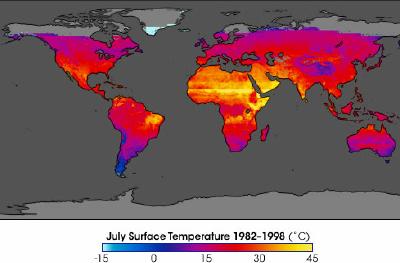
- Climate stability is a critical ecosystem function relevant to human well-being
- Current concentrations of atmospheric greenhouse gases are above levels we know to be sustainable from the perspective of climate stability relevant to human well-being
- Climate stability is threatened by the historical and continued emissions of greenhouse gases
- Reducing human induced greenhouse gas emissions to levels known to be sustainable will require a radical reorganization of human energy use and economic activities on a global level.
It is clear that radical reductions in greenhouse gas emissions are required to reduce the negative consequences of changes in climate stability. These changes have already begun and action is needed to reduce their unpredictable and unwanted consequences. Sustainable scale for climate stability will likely require greenhouse gas concentrations no higher than 300 ppm. Any levels higher than this will lead to a modification of climate stability; the higher the levels the more rapid and unpredictable the changes.
The IPCC “low risk” scenario (with a target of 450 ppm) is recognition that returning to a sustainable level of emissions may be extremely difficult and that the most we can hope for is to reduce concentrations to slow the pace of global climate change. This approach may have a pragmatic flavour, but we should be clear that it likely means an unsustainable scale for climate stability, and imposes costs on future generations that are incalculable. Pragmatism and justice would seem to be in conflict.
What is Optimal Scale for Climate Change?
Sustainable scale as a concept tells us what relationship is possible between economic throughput and critical ecosystem functioning, based on basic laws of science. In the case of climate change, the evidence indicates that atmospheric greenhouse gas concentrations above 300 ppm begin to trigger changes in global climate stability.
This conclusion does not mean that 300 ppm is necessarily the level that is most desirable from a perspective of human well-being. The level of economic throughput that provides the greatest overall benefits is referred to as
Optimal Scale (see
Sustainable Scale). Optimal scale identifies the level of economic throughput that is most
desirable: it is that level of economic throughout, within the sustainable range, where total benefits exceed total costs.
Determining Optimal Scale for Climate Stability
Determining what constitutes sustainable scale is based on laws of science. Determining optimal scale begins with these scientifically determined limitations, and integrates human concerns regarding safety, values regarding justice for current and future generations of humans and other living creatures, and the level of material well-being we desire (see
Optimal Scale in
Sustainable Scale).
Inevitably, there are differing views on these soico-political issues, as well as different approaches to how such decisions should be made (some refs here). A scale perspective emphasizes that however these socio-political differences are resolved they must remain within a sustainable range determined by the laws of science, that is, within a level of economic throughput that does not exceed the ecosystem’s capacity to continue providing critical life-support services (in this case climate stability).

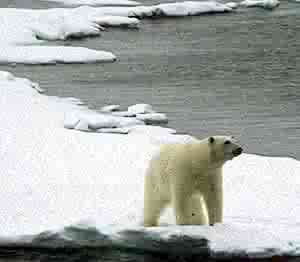
From a risk management perspective (and regardless of how the other socio-political issues are resolved), it is desirable and prudent to target a level of atmospheric concentrations somewhat below the level we suspect to be maximum sustainable scale.
For example, if our best science informs us that 300 ppm is indeed the maximum sustainable scale, this would not mean that economic throughput should target this level of greenhouse gas concentration. A policy target that is just on the borderline between sustainable and unsustainable scale has risks associated with it: some unpredictable event (e.g. solar variability, major volcanic eruptions, changes in thermohaline circulation, etc.) could move global climate to an unsustainable range.
In terms of an optimal scale for climate stability, the level of economic throughput must result in an atmospheric concentration of greenhouse gases somewhere below the 300 ppm level. How much lower, is an issue of risk management. Do we regard climate disruption or living with less energy as presenting the greater risk?
Scale Relevant Solutions for Climate Stability
- Target Optimal Scale as the Policy Priority
- Employ Multiple Approaches to Achieve Optimal Scale
- Ensure a Global Enforcement Mechanism Exists
- Apply Adaptive Management Principles
Target Optimal Scale as the Policy Priority
Get the Target Right
Optimal scale is nothing more than the most desirable level of sustainable scale. To accept any target that is not sustainable is to be responsible for all the consequences associated with unsustainable practices – in the case of climate, the inevitable degradation of the climate stability that humans and many species depend on for their well-being, and the eventual demise of human civilization.
An optimal scale of less than 300 ppm may or may not be a technically achievable level of greenhouse gas throughput. Climate impacts are already occurring (see
Climate Change). Justice to future generations (of all species) requires that we at least attempt to ensure our economic throughput is sustainable. At the very least, the closer we can come to the ideal of optimal scale, the longer the historical levels of climate stability will be available to maintain our life-support systems.
Sustainability vs Politics
Attempting to achieve a sustainable level of greenhouse gas emissions has not characterized the formal proceedings of the Kyoto Protocol. Issues of responsibility for past and future emissions; who is more or less able to afford mitigation measures; who might gain or lose if emissions are greatly reduced; as well as powerful financial interests in the status quo, have collectively conspired to give precedence to immediate economic concerns about the implications of greenhouse gas reductions relative to the longer term consequences of unsustainable practices.
The major obstacles to achieving optimal scale are political; there is not even agreement that a sustainable level of emissions is a desirable target. In challenging this short-sighted and dangerous perspective it is important to not loose sight of the consequences – unsustainable practices mean the inevitable collapse of human civilization as we know it in the long run.
There are also considerably more immediate consequences that will impose severe costs on much of the earth’s biosphere, and therefore on economic activity as well.1 Very narrow financial interests appear to be influencing the consequences for everyone, including the majority of economic interests. This is both unsustainable and unjust in terms of the responsibilities we all share to maintain the global commons.
Employ Multiple Approaches to Achieve Optimal Scale
Kyoto Solutions Better than Kyoto Targets
The Kyoto targets are lacking in terms of achieving sustainable scale, but the Protocol does contain a variety of useful solutions to reduce greenhouse gas emissions. The policies and instruments identified by Kyoto have the potential to achieve sustainable scale if they are designed to reach that goal. Currently, they are designed to achieve a much more modest target.
Technical and Policy Solutions to Achieving Optimal Scale
The political obstacles to achieving optimal scale are paramount; there are also a number of technical and economic hurdles. Overcoming these technical and economic obstacles will put additional pressures on the political system to achieve optimal scale. There are a variety of policy instruments available that could be used to reduce anthropogenic greenhouse gas emissions and achieve optimal scale. These include:
- Elimination of Perverse Subsidies on Fossil Fuels
- Pollution Quotas on GHG Emissions
- Cap and Trade Permits for GHG
- Carbon Taxes and Taxes on other GHG Emissions
- True Cost Pricing
- Depletion Quotas on Fossil Fuels
- Better Land Use Policies
- Conversion to Renewable Energy
- Sustainable Population Policies
Elimination of Perverse Subsidies on Fossil Fuel Sources
The first and most obvious policy recommendation for greenhouse gas reduction is the elimination of harmful subsidies on fossil fuels. Both direct and indirect subsidies occur. Direct subsidies cover such items as exploration and drilling activities, and various tax relief schemes. Indirect subsidies include the many
externalized costs caused by fossil fuels.
Various estimates place the direct fossil fuel subsidies at between $235 and $300 billion annually.2 Many of these subsidies go to some of the largest and most profitable corporations in the world. Indirect subsidies are more difficult to estimate, but are likely to be even greater. Together these enormous subsidies act to make fossil fuels more economically competitive compared to renewable energy sources, encourages further investment in fossil based energy, and discourages badly needed investment in renewable energy sources. Article 2 of the Kyoto Protocol identifies the need for reducing these perverse subsidies.
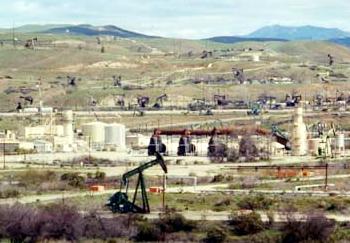 Pollution Quotas on Greenhouse Gas Emissions
Pollution Quotas on Greenhouse Gas Emissions
Since the atmosphere has a limited ability to absorb excess greenhouse gases, the simplest and most direct policy to address climate change is to set a limit or quota (see
Supportive Public Policies) on the total global emissions of CO2, Methane, Nitrous Oxide and other greenhouse gases. Reduced emissions will eventually result in an atmospheric concentration of greenhouse gases that is sustainable.
An international agreement such as the Kyoto protocol is necessary to set and enforce sustainable emission limits. Kyoto has set a limit, but its reduction target of 5% below 1990 levels by 2012 pales in comparison with the 80-90% reduction identified by the IPCC to stabilize CO2 levels at 450ppm. Even this target is unlikely to be sustainable.
A scale analysis suggests that emission levels of 54 Megatons of C02 or less, for example, are required to maintain a sustainable level of throughput (see
What Levels of Greenhouse Gas Emissions Are Sustainable? in
Scale Problem). If an emission quota system is used, it should set a target based on what the best available evidence indicates is a sustainable level, regardless of the difficulties involved.
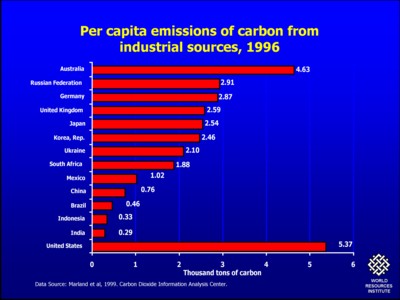
Emission Quotas and Fairness
There are major international disagreements regarding the basis for allocating emission quotas. If based on historical levels then previously high levels of developed countries would remain high, and developing countries will find this inequitable and restrictive of their future development options.
Some stakeholders in developing countries believe that emission quotas should be allocated based on population. In their view, this remedies the bias in favor of already developed countries, and rests on the moral argument that each human being is entitled to the same amount of the atmospheric commons.
Large and rapidly developing countries such as China, India, and Brazil have not joined the Kyoto protocol, in part, because this issue of fair allocation of emission quotas has not been resolved. This position has provided the United States with an argument to refuse to join, citing the lack of inclusion of these high emitting developing countries as a flaw in the agreement.
Cap and Trade Permits for Greenhouse Gas Emissions
Once emission quotas are established, a system which allows trading of emission permits can be a very effective method of efficiently maintaining emissions within the overall limit established by the quota. There are various approaches to emission trading permits. What is required for ensuring emissions remain within a specified quota is a cap and trade system, which works by issuing or selling emission quotas as permits to each individual, industry, country, etc (see
Supportive Public Policies) .
Then each permit holder is allowed to trade or sell their permit if they need more or less permits for their emission activities. Those who emit less than their permit allows may sell their permits to those who need permission to emit more. The advantage of the cap-trade method is that it allows the maximum level of freedom by the individual emitters, while maintaining an overall quota of global emissions. This approach has been used very effectively and efficiently in both the US and Europe for pollutants which cause acid rain.
There is an emerging market for carbon emissions trading. The World Bank and others are devising a carbon trading system for Kyoto Signatory nations. The EU has established a cap and trade system, several US states have designed a cap and trade system, and the Chicago Climate Exchange (CCX) has set up a commodity market which allows for trading CO2 emissions.
Depletion Quotas on Fossil Fuels
A more direct approach to reducing some greenhouse gases is to put depletion quotas on the extraction of fossil fuels (see
Supportive Public Policies). Depletion quotas are identical to emission quotas except they apply to extraction rather than emissions. Cap and trade permits could also work with depletion quotas. Depletion quotas can be administratively more efficient because there are fewer sources of extraction than emission.
However, this approach is often more difficult politically because sources of extraction are generally owned properties, and the emission sinks are part of the commons. This problem may be overcome by considering the rights involved in ownership as a bundle of rights, and the depletion quota is only affecting one “stick” in the bundle, namely the amount of material that may be extracted per annum. All other ownership rights can remain intact.
Carbon Taxes and Taxes on other Greenhouse Gas Emissions
A parallel approach to emission quotas is to tax greenhouse gas emissions. Generally, the higher the tax the greater the reduction of the activity taxed. A high carbon tax, for example, would reduce consumption of fossil fuels.
However, studies indicate that the change in demand for fossil fuels is relatively “inelastic” or inflexible. Therefore a large carbon tax increase would be needed to have an impact on carbon emissions. Nevertheless it would generate a tremendous amount of public revenue, and may be more politically feasible than emission quotas on CO2 in the near term.
Some European countries like Denmark, Finland, France, Germany, Italy, Netherlands, Norway, Sweden, and UK have already implemented some carbon taxes.
A major downside of a carbon tax is that it targets price and not quantity where as ecosystems respond to quantity rather than price. The important target is greenhouse gas concentrations, and to ensure sustainable levels, the carbon taxes would need frequent adjustments. On the other hand, a carbon tax on greenhouse gas emissions would be a very instructive way to inform consumers about the need to modify their behaviors.
True-Cost Pricing or Pigouvian Taxes
One of the justifications for a carbon or other greenhouse gas tax is so products reflect their true costs to the environment. Incorporating
externalized costs into the prices of products was first proposed by economist AC Pigou, so pollution taxes are often called “Pigouvian” taxes. If prices do not include external costs, consumers are given false price signals, and therefore over consume polluting products, contributing further to scale problems.
Better Land Use Policies
Some common land use practices such as deforestation, urban sprawl, and certain agricultural practices, are major emitters of greenhouse gases. Modifying these practices can therefore make a significant contribution to reducing greenhouse gas emissions. Practices which would lead to reduced emission include:
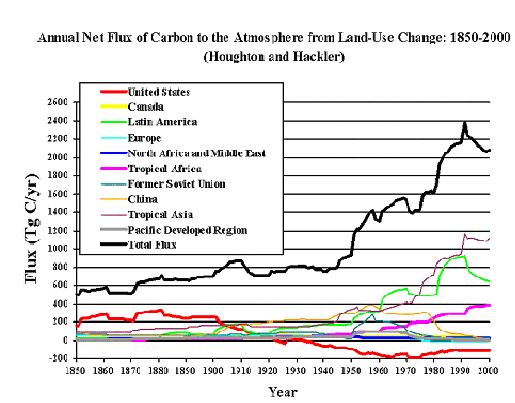
- Urban design that reduces sprawl and supports easy car-free access to work-live-play areas
- Preservation of existing carbon pools through such practices as forest reserves, reduced deforestation, forest management, alternative harvest practices, fire and pest protection
- Management for carbon storage through afforestation, reforestation, agroforestry, enhanced natural regeneration, re-vegetation of degraded lands, tillage and other agricultural practices to increase soil carbon, and management of forest products to increase in-use lifetimes
- Management for carbon substitution by using biomass to replace durable energy-intensive low-carbon content materials (e.g. bricks, cement, steel, plastic), and to replace fossil fuels with sustainably-grown bioenergy feedstocks
- Reduction of commercial herds (cattle, sheep, etc)
Land use change has contributed substantially to the addition of carbon to the atmosphere since 1850. Deforestation increases the CO2 level of the atmosphere by reducing the amount of plants absorbing CO2. Deforestation occurs where land is cleared for agriculture and grazing of livestock. Clear cutting and other unsustainable forest practices for timber may drastically reduce tree cover.
Human urbanization, industrial development, and sprawl, including road construction and maintenance adds to the reduction of plant cover. Creation of reservoirs for water supplies and recreation often floods green areas, and may increase methane production. Pollution as well as mineral, gas, and oil extraction also destroy habitat. One positive note is the increased productivity of farms in industrial countries has allowed some regrowth of forests. Some industrial nations have more forest cover than 100 years ago.
Carbon Sequestration Techniques
Improving land use practices would reduce greenhouse gas emissions partly by increasing carbon sequestration (e.g. through reforestation). Natural carbon sequestration has been decreasing as a result of human activities, and therefore could be increased by reversing these activities. (e.g. reforestration).
In addition, a variety of innovative technologies are being explored to artificially increase carbon sequestration in order to allow continued use of fossil fuels.3 However, these technologies are not yet developed and we should not rely on them to provide appreciably higher levels of carbon sequestration than can be achieved by regeneration of natural sequestration processes.
Conversion to Renewable Energy 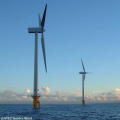
A transition is needed from the heavy global reliance on fossil fuels to renewable energy sources. A variety of renewable sources are available now and conversion is beginning, especially in some European countries. But the continuing government support of fossil fuel subsidies is a major impediment to the further development and implementation of these technologies.
Analyses of these alternatives at least raises the question as to whether the current energy demands of the global economy can be met with such a transition. This question indicates that some major global policy decisions regarding the broader issue of energy consumption, arises out of the climate debate, and is yet to be addressed (see
Energy).
Sustainable Population Policies
The projected 50% increase in global population over the current century indicates that enormous efforts will be required to achieve sustainable scale with regard to climate, as well as many other issues. The total ecological impact of human activities is a function of consumption levels, the efficiency and toxic quality of the technologies used, and the number of people doing the consuming (see
The IPAT Equation). Policies which support smaller families will assist technological and political solutions to the climate problem (see
Population).
Summary of a Sustainable Scale Perspective on Climate Change
A scale perspective requires us to ask what level of anthropogenic greenhouse gas emissions exceeds sustainable scale, and triggers the disruption of the ecosystem’s capacities to continue providing critical life-support services. Our knowledge regarding climate dynamics and critical ecosystem functions may not be complete, but neither is our ignorance.
We know enough to know we are in trouble: we are currently beyond what we know historically to be safe emission limits; we know climate stability is currently affected, and we know climate problems will get considerably worse.
The big questions are whether we know how to get out of trouble, and whether we have the will to do so. While we are missing information that might be desirable, this information is not necessary to establish sound and adaptable policies regarding sustainable scale for climate change (see above Scale Relevant Solutions for Climate Stability).
References
2 Price of Power, New Economics Foundation, 2004. www.neweconomics.org , see Publications
3For example, Carbon Sequestration Leadership Forum, www.cslforum.org